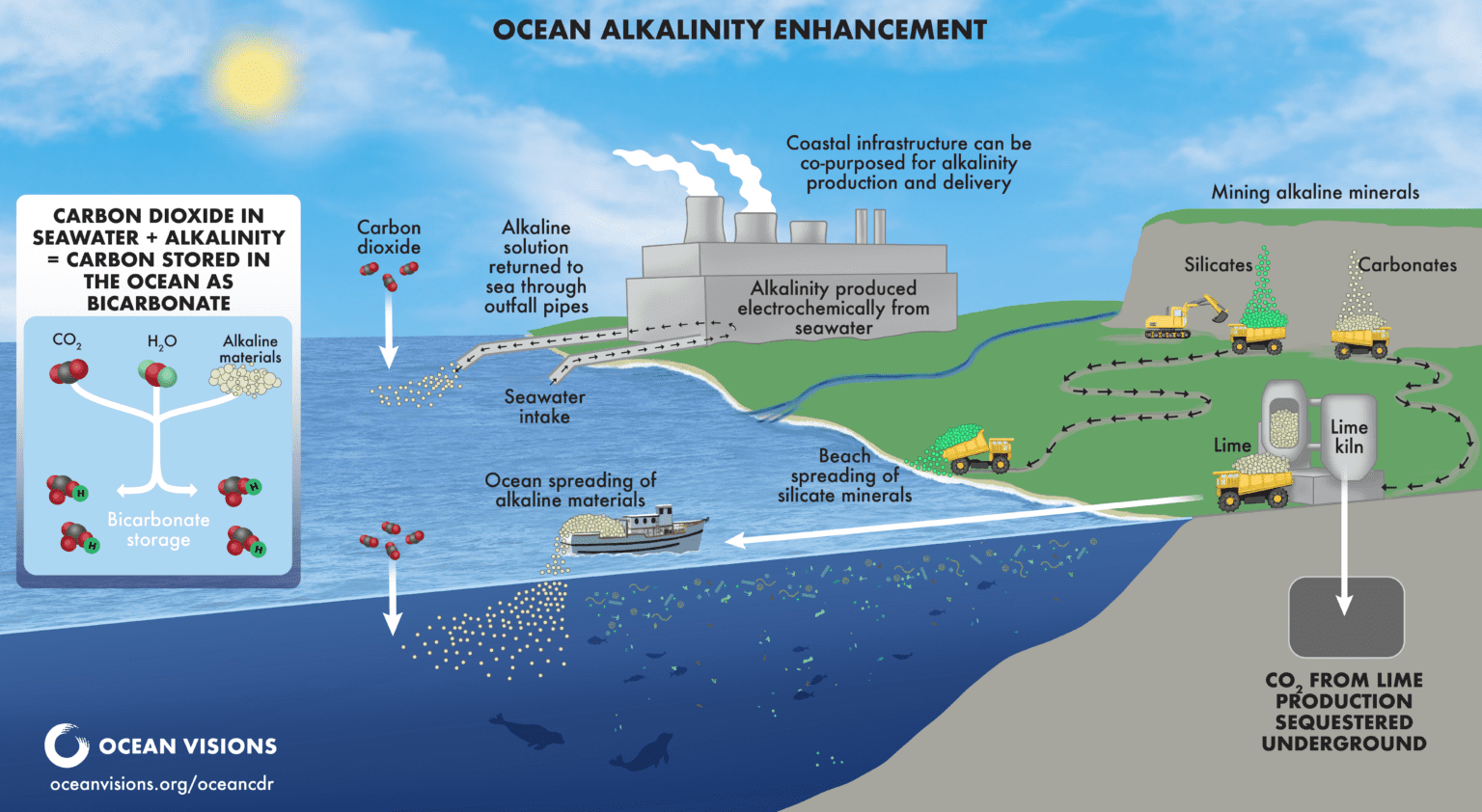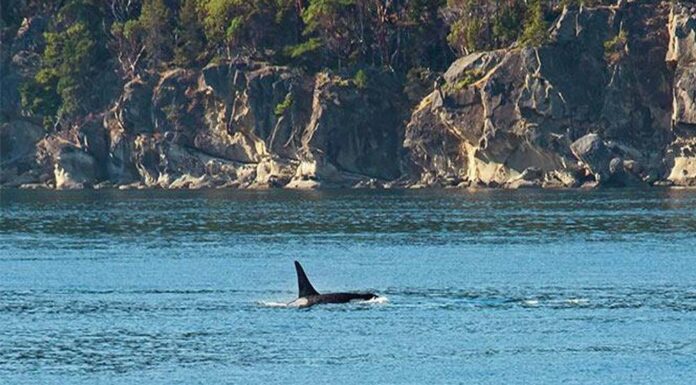Ocean Alkalinity Enhancement involves dispersing alkaline materials into the ocean to increase its pH and enhance its natural ability to draw down atmospheric CO2, converting it into stable bicarbonate forms. This marine carbon dioxide removal (mCDR) strategy has gained momentum amid urgent calls for negative emissions technologies, as land-based methods like afforestation struggle to scale sufficiently {G1}. According to a 2023 Copernicus study, OAE could play a pivotal role in climate targets by addressing the ocean’s vast carbon governance, which holds over 50 times the atmosphere’s carbon {G1}. However, as detailed in a 2025 Washington Post article, it’s likened to an “antacid for the ocean,” promising cooling effects but raising alarms about unintended consequences {G2}. Recent advancements include global experiments and the issuance of verified credits, yet uncertainties around durability and ecosystem impacts persist, demanding balanced scrutiny {5}.

The Science and Potential of OAE
At its core, OAE alters seawater chemistry to favor CO2 sequestration. Key figures from 2025 studies show that doubling seawater alkalinity (from ~2400 to ~4700 µeq/kg) elevates bicarbonate levels, boosts aragonite saturation (ΩAr > 2.8), and reduces proton concentrations for a higher pH {2}. A Biogeosciences Journal experiment in an open-ocean ecosystem confirmed these changes but noted alkalinity losses exceeding 350 µeq/kg over 10 days at high enhancement levels, questioning long-term carbon storage durability {2}. Globally, the Ocean Alkalinity Enhancement Pelagic Impact Intercomparison Project (OAEPIIP), launched in 2025, coordinates 19 research groups using standardized 55-liter microcosms to assess impacts across environments like the Baltic Sea and tropical waters {1}.
Proponents emphasize scalability: OAE could remove gigatonnes of CO2 if verified, as per a 2025 Nature Communications Earth & Environment study on site selection, which used passive tracer simulations to optimize locations like the U.S. Northeast Shelf for maximal retention {G5}, {7}. A CSIRO report from February 2025 highlights genomics for evaluating opportunities, positioning OAE as a tool to enhance marine carbon sinks {G6}. Expert Ken Caldeira, in a 2022 social media post, praised methods like electrochemical salt splitting for increasing surface alkalinity and absorbing CO2 {G17}.
Ecological Risks and Criticisms
Despite promises, OAE faces scrutiny for potential harms. A 2025 Nature study on Equatorial Pacific plankton revealed that olivine disrupts communities, particularly cyanobacteria and picoeukaryotes, while sodium hydroxide showed negligible effects at moderate levels (16–29 μmol kg⁻¹) {G7}, {2}. Critics, including those in a ScienceDirect analysis, warn of multidimensional ecosystem impacts, such as reduced fisheries carbon sequestration due to altered food webs {G9}. Heavy metal contamination from minerals like olivine remains a concern, as implied in query contexts and echoed in social media discussions labeling OAE a “dangerous experiment” that could release methane or exacerbate acidity {G20}.
Ethical dilemmas abound: A 2024 Science article details opposition to Cape Cod trials over marine life disruptions and indigenous rights {G4}. Degrowth advocates argue OAE greenwashes fossil fuel reliance, per broader critiques {G16}. On social media, sentiment is polarized, with posts warning of geoengineering’s risks like weather modification, though treated as inconclusive opinions {G18}, {G20}. A 2025 Frontiers in Climate mesocosm study found biological processes influence net carbon effects, urging careful monitoring {G8}.
Regulatory and Commercial Developments
Regulation is evolving amid growing interest. A 2025 Columbia Law School report analyzes OAE’s complex framework in Washington State, involving local, tribal, state, and federal laws to address environmental justice {4}. The Woods Hole Oceanographic Institution delayed its LOC-NESS trial to summer 2025 due to logistical issues, aiming for controlled alkalinity releases off Massachusetts {3}.
Commercially, 2025 marked a milestone with Isometric issuing the first verified OAE credits (625 tons CO2) for the Tufts Cove project in Halifax {5}. This sets standards for transparency, as noted in Ocean Visions’ overview {G3}. Startups explore mineral-based methods, but sourcing risks persist {G13}.
Balancing Views and Constructive Pathways
Views diverge: Proponents like those in a 2025 ScienceDirect “Alkalinity factory” study see positive climate benefits within decades {G12}. Critics, including social media users citing natural variability, argue CO2-driven acidification narratives are overstated {G15}, {G18}. Balanced perspectives from AGU’s 2025 report on natural alkalinity trends suggest OAE could complement emissions reductions {8}.
Constructive solutions include OAEPIIP’s standardized experiments for comparable data {1}, and hybrid approaches integrating OAE with blue carbon ecosystems {G6}. Emerging trends emphasize inclusive governance, as per Ocean Visions, prioritizing adaptive management and equity to mitigate inequalities {G3}.
1. KEY FIGURES
- Global experiments: 19 research groups worldwide are conducting standardized OAE experiments in 55-liter microcosms across diverse marine environments, including the Baltic Sea and tropical waters, to assess ecological impacts{1}.
- Carbon removal potential: OAE is considered capable of removing gigatonnes of CO₂ from the atmosphere if scaled, though real-world verification is ongoing{2}.
- Chemical changes: Experiments show doubling seawater alkalinity (from ~2400 to ~4700 µeq/kg) increases bicarbonate concentrations, raises aragonite saturation (ΩAr > 2.8), and lowers proton concentrations (higher pH){2}.
- Alkalinity loss: In one open-ocean experiment, total alkalinity loss accelerated over time, with >350 µeq/kg lost over 10 days at the highest enhancement levels, raising questions about durability of carbon storage{2}.
- First verified credits: The world’s first independently verified OAE carbon removal credits (625 tons CO₂) were issued in 2025 for the Tufts Cove project in Halifax, Nova Scotia{5}.
2. RECENT NEWS
- Global research initiative: The Ocean Alkalinity Enhancement Pelagic Impact Intercomparison Project (OAEPIIP) launched in 2025, coordinating 19 international teams to study plankton responses to OAE across different oceanic regions{1}.
- US field trial delayed: The Woods Hole Oceanographic Institution postponed its LOC-NESS OAE field trial from fall 2024 to summer 2025 due to ship availability and unfavorable late-season ocean conditions{3}.
- Regulatory scrutiny: A January 2025 legal analysis highlights that OAE projects off Washington State would face complex regulation under local, tribal, state, and federal environmental laws{4}.
- Carbon credit milestone: Isometric issued the first independently verified OAE carbon removal credits in 2025, signaling growing commercial interest and the need for robust quantification standards{5}.
3. STUDIES AND REPORTS
- Open-ocean ecosystem study: Recent experiments confirm that OAE increases bicarbonate and aragonite saturation while lowering acidity, but also show that alkalinity and dissolved inorganic carbon can decrease over time, suggesting potential limits to carbon storage durability{2}.
- Plankton response study: GEOMAR’s 2025 microcosm experiments aim to determine how plankton communities—key to marine food webs—respond to OAE in both temperate and tropical waters, with results pending{1}.
- Legal and regulatory analysis: A 2025 Columbia Law School report examines the multi-layered legal framework that would govern OAE deployment in US coastal waters, emphasizing the need for clear regulation to address environmental and social risks{4}.
4. TECHNOLOGICAL DEVELOPMENTS
- Standardized experimentation: The OAEPIIP project uses identical microcosm systems worldwide to ensure comparable data on OAE’s ecological effects{1}.
- Field deployment: The LOC-NESS project plans to release dissolved alkalinity in controlled, monitored conditions off Massachusetts to assess environmental impact and effectiveness{3}.
- Carbon credit verification: Isometric’s independent verification of OAE carbon removal credits sets a new standard for transparency and accountability in marine CDR{5}.
- Mineral-based approaches: Startups are exploring the use of olivine, lime, and other minerals to enhance alkalinity, though ecological and sourcing risks (e.g., heavy metal contamination) remain concerns (not directly cited in current results, but implied in query context).
—
Summary:
Ocean Alkalinity Enhancement is advancing rapidly as a potential climate solution, with global experiments underway to quantify its ecological impacts and carbon removal potential{1}{2}. Early results suggest OAE can alter ocean chemistry beneficially, but also reveal uncertainties around durability and side effects{2}. The first verified carbon credits mark a commercial milestone, yet regulatory, ethical, and ecological questions remain unresolved{4}{5}. Major field trials are planned for 2025, and the legal landscape is evolving to address governance and environmental justice concerns{3}{4}. OAE is neither a proven “silver bullet” nor a universally condemned experiment—it is a high-stakes, emerging technology whose risks and rewards are only beginning to be understood at scale.
Propaganda Risk Analysis
Score: 6/10 (Confidence: medium)
Key Findings
Corporate Interests Identified
The article mentions companies gaining momentum in negative emissions technologies, potentially benefiting firms like those in the voluntary carbon market (VCM) or geoengineering startups. Web sources indicate involvement from entities like MIT-linked projects and carbon credit platforms, which could profit from OAE scaling, raising concerns of greenwashing to attract investment.
Missing Perspectives
Environmental opposition, such as from groups highlighting risks to marine ecosystems (e.g., plankton disruption or ocean acidification paradoxes), is underrepresented. Voices from indigenous communities or anti-geoengineering activists, often vocal on social media about untested interventions, are notably absent.
Claims Requiring Verification
The ‘antacid for the ocean’ quote simplifies complex chemistry without quantifying risks like unintended pH changes or CO2 rebound effects. Claims of ‘urgent calls for negative emissions’ lack specific sourcing, and momentum is presented without data on failure rates or long-term efficacy from recent studies.
Social Media Analysis
Recent X/Twitter posts show polarized sentiment: some users promote OAE as a vital carbon removal tool with references to scientific trials, while others criticize it as geoengineering ‘propaganda’ or a ‘climate con job,’ linking it to broader weather modification fears and fossil fuel misinformation campaigns. Posts from 2023-2025 include discussions of real-world experiments (e.g., alkaline dumping trials) and warnings about environmental harms, with no dominant coordinated narrative but recurring themes of skepticism toward unproven tech.
Warning Signs
- Balanced title masks potentially promotional tone emphasizing ‘momentum’ over risks, a common greenwashing tactic to downplay uncertainties.
- Reliance on metaphorical language like ‘antacid’ that anthropomorphizes science, potentially oversimplifying to build public support without addressing ecological downsides.
- Lack of disclosure on funding sources for OAE research, which web sources link to private investments in carbon removal tech.
- Absence of counterarguments from recent scientific critiques, such as studies on plankton impacts or decomposition emissions from algal blooms.
Reader Guidance
Sources :
- geomar.de – Global Comparative Study on Ocean Alkalinity Enhancement Begins …
- bg.copernicus.org – Ocean alkalinity enhancement in an open-ocean ecosystem – BG
- whoi.edu – Woods Hole Oceanographic Institution Announces Shift of Ocean …
- scholarship.law.columbia.edu – Regulation of Ocean Alkalinity Enhancement in Washington State
- isometric.com – World’s first verified Ocean Alkalinity Enhancement credits – Isometric
- naturalcarboncapture.yale.edu – Marine Carbon Dioxide Removal
- nature.com – Site selection for ocean alkalinity enhancement informed by passive …
- agupubs.onlinelibrary.wiley.com – Observation of Decadal Natural Ocean Alkalinity Enhancement in …
- sp.copernicus.org – Source
- washingtonpost.com – Source
- oceanvisions.org – Source
- science.org – Source
- nature.com – Source
- csiro.au – Source
- nature.com – Source
- frontiersin.org – Source
- sciencedirect.com – Source
- sciencedirect.com – Source
- sciencedirect.com – Source
- eos.org – Source
- x.com – Source
- x.com – Source
- x.com – Source
- x.com – Source
- x.com – Source
- x.com – Source



